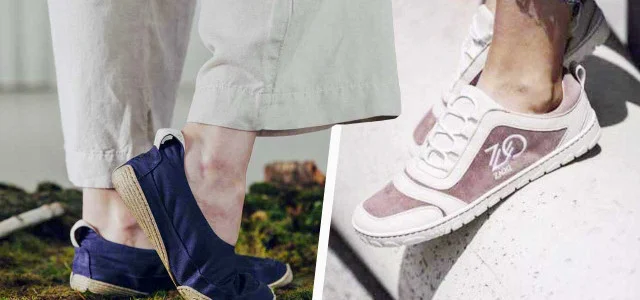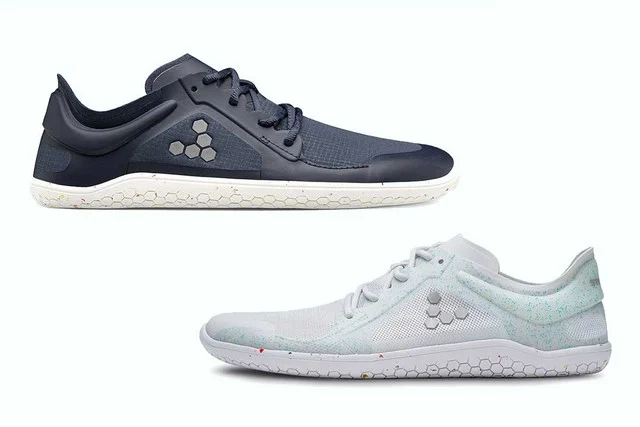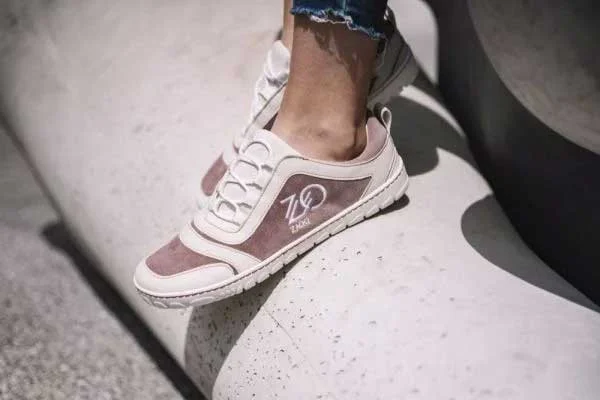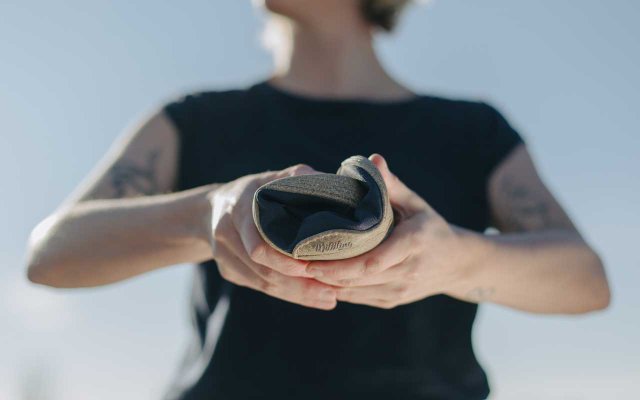
Are barefoot shoes really healthy for our feet – and are they sustainable? At least there are some brands that design parts of their production better.
Barefoot shoe brands are becoming increasingly popular. Fans swear by the natural movement, appreciate the extra toe freedom and hope for better foot muscles and balance thanks to the thinner soles.
So that you experience a different walking sensation in barefoot shoes than in conventional shoes, they are specially shaped and processed. They are designed to give you the best possible feeling of walking barefoot without offering less protection than a normal shoe. Because of course a barefoot shoe is still a shoe, and walking barefoot is still colder, dirtier, damper and associated with a higher risk of injury than walking in shoes.
Barefoot shoes: the sole makes the difference
What distinguishes barefoot shoes most noticeably from conventional shoes is their particularly thin and flexible sole. It makes the promised barefoot feeling possible in the first place. Because the soles are so thin, most barefoot shoes could even be bent or even rolled as a whole, which always makes for an amazing (demonstration) effect. Here you can see the example of a shoe from Wildling:
True barefoot walking has been proven to have numerous benefits: it improves blood circulation in the feet, strengthens the foot muscles and promotes sensorimotor function and balance. The walking technique also changes automatically when walking barefoot, so that the heels are subjected to less stress while the forefoot and toes are subjected to more stress. Regular barefoot walking is even said to prevent back problems.
Are barefoot shoes healthy?
Going barefoot every once in a while may be beneficial – but does this also apply to wearing barefoot shoes? There is no evidence that barefoot shoes are healthy or have a long-term positive effect on health, even if manufacturers are of course interested in creating a corresponding impression and describe walking barefoot (not barefoot shoes) as “the healthiest way of moving”. The barefoot shoe brands often try to address potential customers emotionally, like the barefoot label Vivobarefoot.
So are barefoot shoes healthy or not? That still needs to be explored. For barefoot running shoes at least (in this case from manufacturer Vibram), a 2013 study suggested that they tend to have a more detrimental effect on the feet. However, it was only carried out on 36 participants. But there are also medical professionals who recommend barefoot shoes – but not without restrictions. For people with severely misaligned feet, barefoot shoes could exacerbate the problems and lead to pain. The answer to the question of whether barefoot shoes are healthy is, therefore: Depends on the body of the wearer and his needs – only a knowledgeable (sports) orthopaedist can say more precisely after an examination.
Mindfulness of the feet
Part of the good image that barefoot shoes have should therefore have something to do with psychology – which is nothing to be said against it. Many wearers swear by the light and flexible footwear and attribute a positive influence on their well-being to their barefoot shoes. It is undisputed, for example, that users of barefoot shoes begin to feel the (un)evenness of the ground and their own walking again, especially at the beginning. Anyone who is enthusiastic about this form of mindfulness exercise in everyday life will also love wearing barefoot shoes.
In addition, feet in barefoot shoes are undoubtedly less constricted than in conventional shoes, which many wearers will also find pleasant.
Barefoot shoes: step in slowly
If you are not sure whether you feel comfortable in barefoot shoes, you should research which barefoot shoe shops are in your area and do a test run in different brands and models. For example, Vivobarefoot has its own branches in many German cities.
As a tip: If you have bought a pair of barefoot shoes and have only worn conventional shoes up to now, you should slowly get used to your new, hardly cushioned shoes. Sore muscles in the legs, for example, are a sign to take a barefoot break. If you develop pain in your feet, knees or back pain, caution is advised. Barefoot shoes are also less suitable for people who are very overweight or have foot deformities because the flat sole – intentionally – has almost no cushioning or correction.
Not every shoe suits everybody. Recommended sustainable shoes do not have to be “barefoot” – you can find fairer sneakers in our sneaker leaderboard, for example.
More sustainable barefoot shoe brands for women, men & children
Barefoot shoes are now offered by numerous manufacturers. Although almost all of them emphasize the particular closeness or closeness to nature of their products, this, unfortunately, does not mean that all barefoot shoe brands automatically achieve above-average performance in the areas of sustainability, environmental protection, and social fairness. We could not find any brands that have reputable certificates to prove that they work sustainably in all their processes. But there are a few brands that are at least partially pursuing sustainability efforts.
These include the barefoot shoe brands Senmotic, Wildling Shoes, Vivobarefoot & Zaqq. We will introduce them to you in more detail below (in alphabetical order). For each manufacturer, we explain the sustainability efforts they are making so that it is clear how the following suppliers sign themselves from other shoe brands. So you can make an informed purchasing decision.
By the way: We have a separate article for barefoot shoes for children, as well as for barefoot sandals.
Senmotic: Sporty, elegant barefoot shoe brand
 Senmotic shoes are only made by hand after the order has been received. (Photo: Senmotic)
Senmotic shoes are only made by hand after the order has been received. (Photo: Senmotic)Senmotic barefoot shoes are made in a factory near Leipzig. The shoes are only made by hand after the order has been received. Most of the materials used also come from Germany. When choosing the material for the uppers and the inner lining of the shoes, the manufacturer opted for leather because it adapts to the feet and is breathable.
According to the manufacturer, however, this leather mostly comes from Argentina and Brazil and is not vegetable-tanned but mineral-tanned. However, Senmotic also purchases skins from Germany and has some leathers produced exclusively in German tanneries. The soles of the shoes are made of a thermoplastic material (TPU) and natural rubber.
There are many sporty shoes, but also some more elegant models. Senmotic also offers the resoling of barefoot shoes, which saves resources and is therefore sustainable.
You can buy Senmotic shoes in their own online shop, they cost around 150 to 230 euros.
Barefoot shoe brand Vivobarefoot

Vivobarefoot is a barefoot shoe brand with a wide range of shoes for all kinds of occasions – you can even get barefoot running shoes. The leather for the barefoot shoes comes from different countries, including Portugal and Ethiopia. Vegetable or chrome-free tanned leather is used on some models, but unfortunately not on all.
Some of the barefoot shoe models are vegan. According to Vivobarefoot, some materials are made from recycled plastic: the inner lining of the barefoot shoes and the soles are made from “as many recycled materials as possible”, for example recycled plastic bottles. The shoes are glued with water-based glue.
Vivobarefoot produces in China and Portugal – according to the manufacturer, the factories are independently controlled to ensure appropriate working standards.
Vivobarefoot barefoot shoes are available for women, men, and children. The price of the current models is between around 50 and 230 euros.
Buy in the online shop of Vivobarefoot, partly also in the stationary trade and used eg on eBay .
Wildling: This barefoot shoe brand relies on natural materials

The Wildling Shoes brand mainly works with materials such as cotton, hemp or washi. Wool is used selectively. The sole is made of cork and recycled rubber: it is glued with water-based glue and additionally sewn. Wildlings are made in a Portuguese factory. According to the German company, fair working conditions and compliance with environmental standards are particularly important.
Wildlings are available for adults (size 36-48), children (size 23-35) and toddlers (size 18-22). Many models are available in all sizes between 18 and 48, so that the whole family can wear the same Wildling model.
Buy: directly from Wildling
Zaqq: Branded barefoot shoes from Germany

The Zaqq brand makes individual barefoot shoes in a factory in Leipzig. According to their own statements, the barefoot shoe manufacturer tries to produce as little waste as possible, to use renewable raw materials and to avoid chemicals that are harmful to the environment and health.
Due to the production in Germany, the transport routes are short and the energy and CO2 consumption is lower than with production abroad.
Most Zaqq shoes are made of leather that comes from Germany or the EU. There are a few vegan barefoot shoe models: Here Zaqq uses cotton as a base, among other things. The soles of the shoes are made of rubber and are made in Germany.
Zaqq footwear is available for men and women. With prices starting at around 140 euros, Zaqq shoes are not a bargain – but each pair is unique.
Buy: in Zaqq’s online shop or directly in the manufactory in Leipzig – but you should make an appointment beforehand.
Sew barefoot shoes yourself
If you are handy, you might even want to sew a pair of barefoot shoes yourself – using sustainable materials. The Fluff Store offers special patterns and sewing instructions for children’s and adult shoes at a fair price.
The widespread disease caused by high heels can also be avoided in this way. Opinions differ as to whether you wear barefoot shoes with or without socks – ultimately it’s a question of taste and how cold you feel. What you shouldn’t forget: Going barefoot from time to time – for example through dewy meadows. Such experiences while walking are not possible with any shoe.





